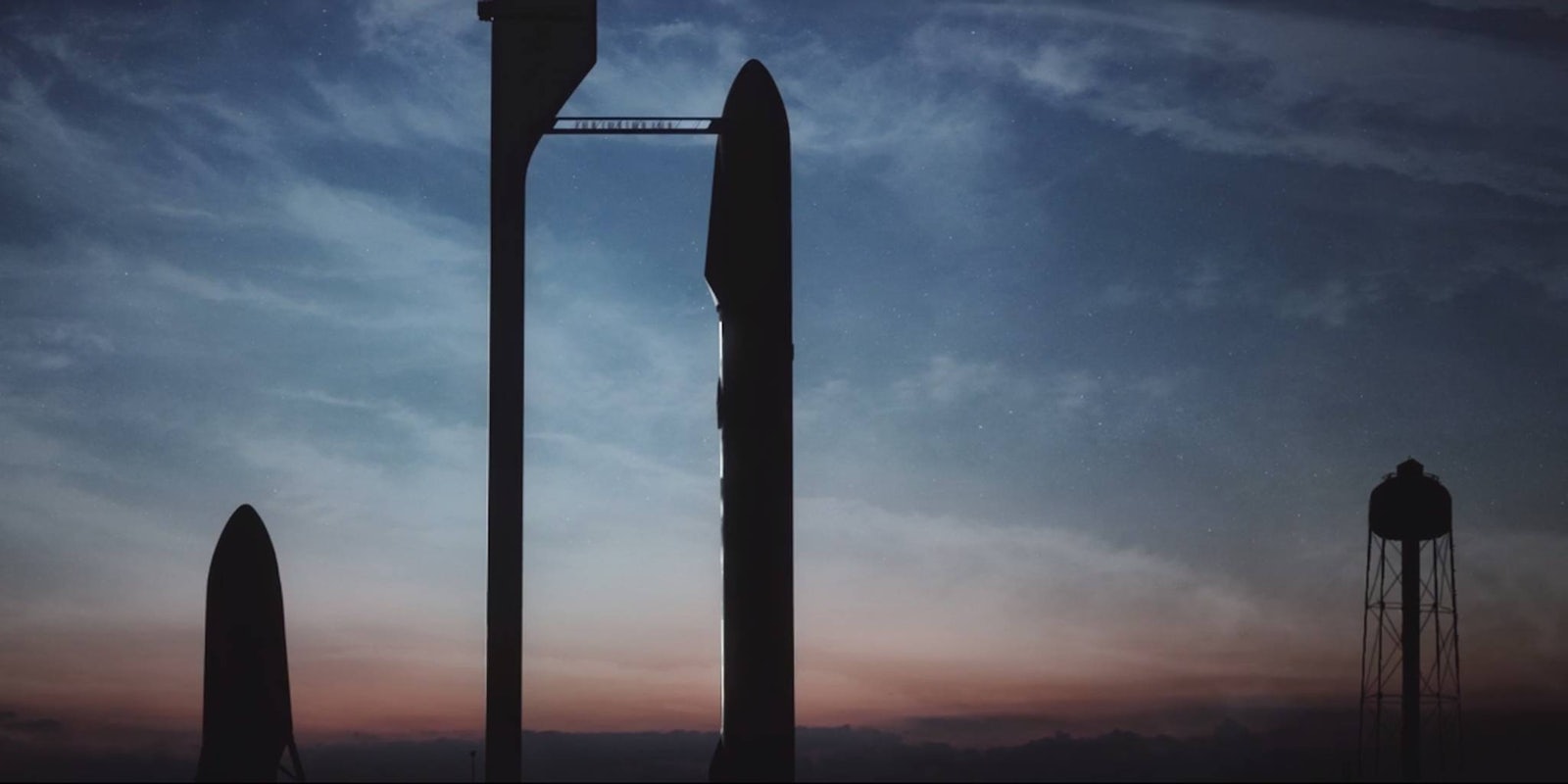SpaceX founder and CEO Elon Musk has a message for the world, and it’s pretty much the same one delivered by Total Recall in 1990: Get your ass to Mars.
On Tuesday in front of the International Astronautical Congress in Guadalajara, Mexico, Musk made his pitch for making humanity a “multi-planet” species, and how that might become possible.
There are, of course, some steep hurdles to overcome, especially when it comes to cost. Musk estimated that an optimistic cost to go to Mars today would be about $10 billion per person. In order to make a Mars civilization realistic, he said, the cost would need to come down 5 million percent to $200,000—the median cost of a single-family home in the U.S.
“It sounds virtually impossible,” Musk said. “But I think there are ways to do it.”
The first cost-saving measure he suggests is something SpaceX is already working on: reusability. The company has experimented—with some success—landing its Falcon 9 rocket on a floating platform so it can be used again.
Reusing spacecraft and equipment might close the cost gap by half, Musk says. More savings could come from refueling SpaceX’s interplanetary rocket in orbit, as well as establishing a source of fuel on Mars so transport ships don’t have to carry fuel to Mars for the trip home.
Musk showed off detailed diagrams of SpaceX’s proposed Interplanetary Transport System, as well as a kind of movie trailer showing what the trip might look like.
The transport rocket itself would be huge, capable of carrying 100 crew and tons of cargo including food, life support systems, and luggage. Musk speculated that the ship will be considered small by future transport standards, invoking the image of the massive fleets seen on popular sci-fi show Battlestar Galactica.
Traveling on these ships would be “really fun,” Musk quipped. With the lowest projected travel time around 80 days, passengers would occupy their time with movies, enjoy the comfort of a cabin, and take their meals at a restaurant. “It can’t feel cramped or boring,” he said.
And in order to make the population of a Mars colony viable and self-sustaining, there would need to be lots of these ships making the round-trip journey.
Musk said an early build of a yet-to-be named interplanetary SpaceX rocket (he suggests calling the first ship the Heart of Gold as a nod to Hitchhiker’s Guide to the Galaxy) could be complete in as few as four years.
Musk returned multiple times to the issue of cost, suggesting that moving forward would require public/private partnerships. He also suggested that terrestrial uses for SpaceX’s technology could help fund advancements in space, noting that the company’s interplanetary rocket could make transportation between New York and Tokyo a simple 25-minute journey (though the landing platform would need to be ocean-based due to noise).
Though the jury is out on just how realistic Musk’s plans might be, he was quick to defend the effort and the dream.
“Technology does not automatically improve; it only improves if a lot of strong engineering talent is applied,” he said.
You can watch the full presentation below.
